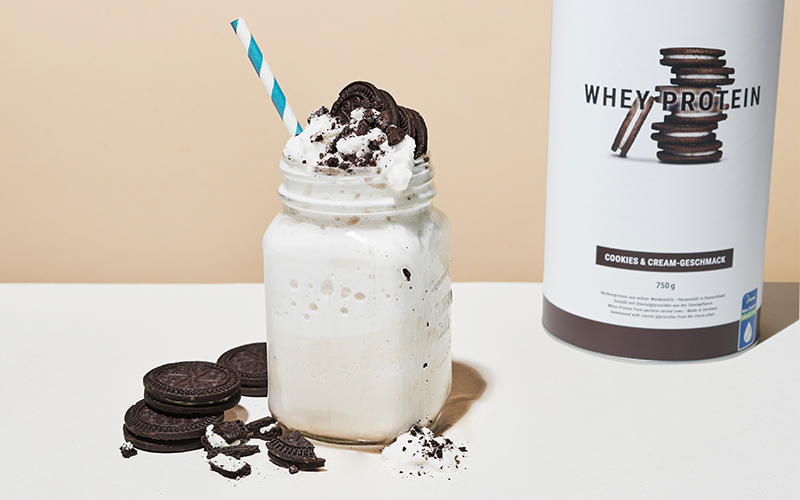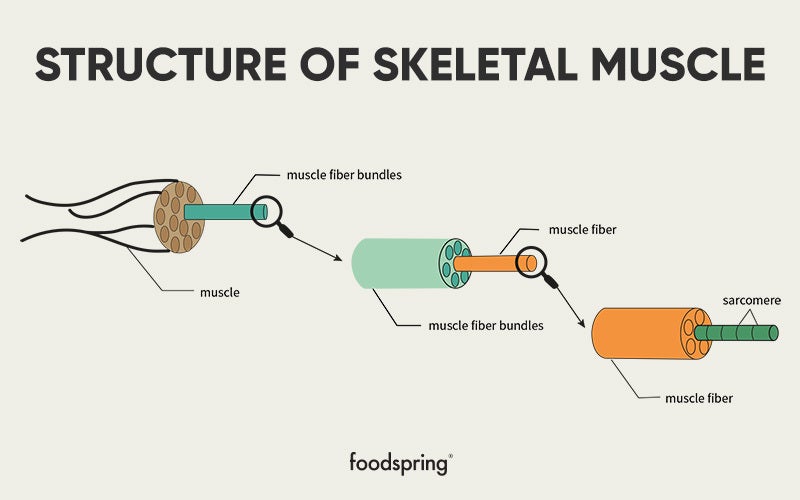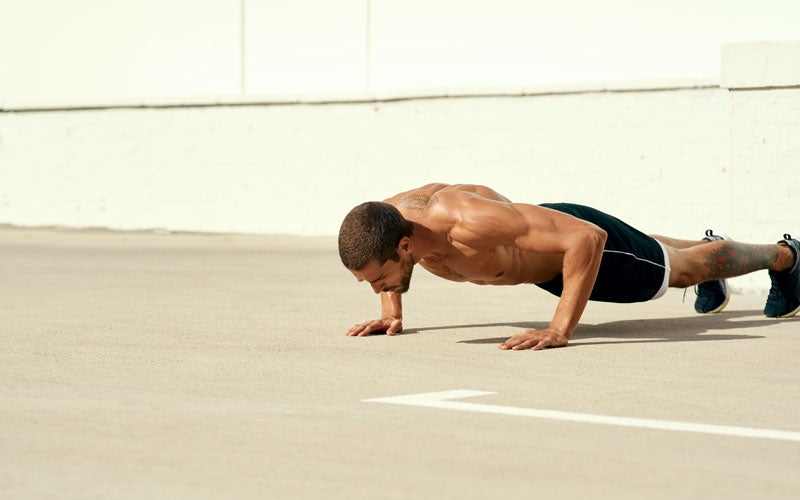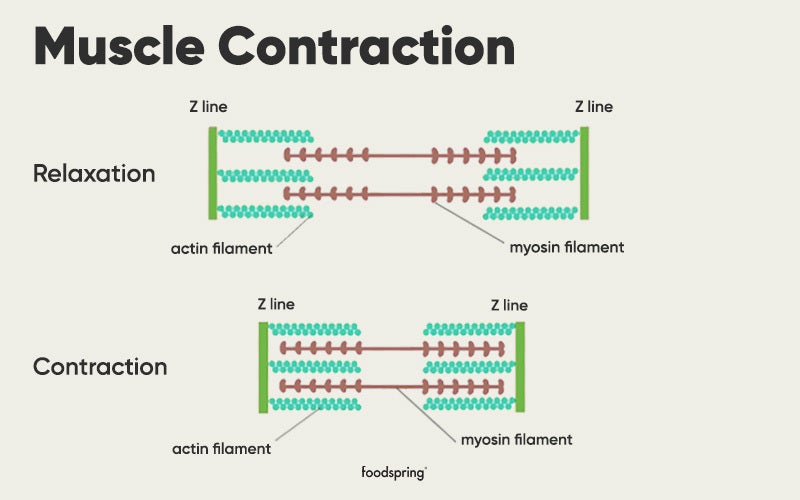Everything You Need to Know About Muscle Structure
 ©DaniloAndjus
©DaniloAndjus
From enabling movement to maintaining metabolism, the muscles do a lot of hard work. Keep reading to find out everything you need to know about how muscle anatomy impacts our abilities in both exercise and everyday life.
What Is a Muscle?
If you think that we only use our muscles during exercise, think again. Without our muscles, we wouldn’t even be able to live! We need this essential body part for everything from sitting upright to laughing. Even your heart is a muscle!
About two-thirds of your muscles can be controlled voluntarily. The rest are activated by reflex or function automatically. They’re responsible for both your active movements as well as internal body functions like your heartbeat. But all of that info still doesn’t explain exactly what a muscle is.
Let’s break it down: Muscles are the “contractile” organs of the human body. In other words, they have the ability to shorten or contract and relax1. If you look at your muscles under a microscope, you’ll notice that each one has a different surface structure. For example, some muscles have transverse striations and others do not. (More on what those are in just a bit.)
Whether you want to build or maintain muscle, eating in enough protein is of the utmost importance. The daily recommended amount is 0.8g of protein per kilogram of body weight, but you may need up to 1.5 or 2g if you exercise a lot. Having trouble reaching that amount naturally? Our Whey Protein makes it easy. Add this powder to a shake or oatmeal for a convenient and delicious serving of 23g of protein.

Striated Muscles
Striated muscles are the cardiac and skeletal muscles. They’re distinguished by transverse striations, which are also known as cardiac or skeletal muscle fibers—markings that create a textured appearance on the surface of the muscle.
A skeletal muscle is responsible for body movement and can be controlled voluntarily. For example, your biceps contract automatically when you move to bend your arm. If you so choose, you can train your biceps in a targeted way during a workout. But these muscles will also grow and strengthen through everyday tasks.
Your heart muscles include both smooth and skeletal muscles. They are constantly in action and never tire in order to keep your heart running. Though it’s not possible to contract them voluntarily, certain stimuli can affect how they react. For example, your heart beats faster when you’re scared or agitated and slows down when you’re relaxed or sleeping.
Smooth Muscles
As the name suggests, smooth muscles have no transverse striations and appear to be completely smooth. They’re comprised of internal organs like the intestine and stomach, as well as external muscles like the buttocks.
This category of muscles is controlled by the autonomic nervous system. They take care of bodily functions that are largely out of our conscious control, like breathing and digestion.2
Fun fact: The most powerful muscles in the body are the masticatory muscles—also known as your mouth! Small but mighty, the biting force of a human mouth is 80kg! Even a wolf only has a biting force of 60kg.3 Not half bad!

Which Muscles Make Up the Human Body?
The human body is composed of more than 650 different muscles. There are many things that make each muscle unique, from the level of joint involvement to the length of contraction times. Luckily, there are a few general categories that help us narrow it all down.
One example is the difference between fusiform and penniform muscles. Fusiforms are characterized by parallel fibers, while penniform fibers are slanted.
Fusiform muscles are found in areas where small but powerful movements are necessary, because they can contract much more than penniform muscles. They include muscles like biceps, triceps, and lats.4
Penniform muscles branch off into smaller categories, like pennates and bipennates—skeletal muscles that attach obliquely to the tendon on one or two sides. Fusiforms include muscles that attach to the tendon on as many as four sides. This includes biceps, triceps, and the thigh muscles.
Digastric and polygastric are two other muscle groups that make up the stomach and digestive areas. They’re characterized by short, separated tendons, which are often referred to as muscle bellies. The rectum is technically polygastric because it’s divided into six segments. It’s also why you may have a six pack when your body fat is low.
What Are Muscles Made Of?
To find out what our muscles are made of, we need to take a closer look at the skeletal muscles. These muscles are typically composed of muscle bellies and tendons. The tendons keep the muscles attached to the bone. The ends of each muscle are known as the insertion and origin.
The origin is the end that’s closest to the core. One example is the biceps, a large, thick muscle that’s made up of two muscle bellies. It originates on the shoulder blade and isn’t far from the center of the body. The insertion is the end that is farthest from the core. For biceps, that would be the forearm.4
Skeletal muscles are wrapped in a connective tissue called fascia. Fascia keeps the muscles separated from each other while also transferring force and enabling mobility, to name just a couple of its functions. The muscle itself is composed of muscle bundles, which themselves are made of many muscle fibers and cells.

Each muscle fiber is made up of muscle cells called myofibrils. Looked at with a microscope, you’ll notice a pattern of sarcomeres—the smallest unit of striated muscle tissue that’s capable of contracting. Each sarcomere is separated by Z4 striations. They’re also composed of both thick myosin filaments and thin actin filaments, which play an essential role in muscle contractions.4
Fun fact: Did you know that the muscles heat the body? In fact, almost 85% of body heat is generated by muscles. Cold shivers are simply muscle contractions that keep you warm.5
Along with all of these different muscle groups and compounds, there are two types of muscle fibers: slow twitch fibers (type I) and fast twitch fibers (type II), which are further divided into type II a and type II b fibers.
These muscle fibers get their different names from the rate at which they contract. Slow twitch fibers may not move quickly, but they contain more mitochondria than fast twitch fibers. The cell powerhouses spend most of their time converting fat and glucose into energy.
The types of muscle fibers used vary from sport to sport. For example, endurance sports like running a marathon rely on type I muscle fibers, whereas high intensity workouts like weight lifting use type II muscle fibers to deliver fast, explosive movements.

How Do Muscles Function?
The muscles primary function is to contract. Whether you’re working out or going about your business, your muscles are working with every movement. Muscle contraction is a complex process that’s triggered by electrical stimulation in the nervous system. Something called motor neurons are responsible for this phenomenon.
The nerves that run from the brainstem through the spinal cord have endings that are deeply bedded into the muscle fibers. The nerves and muscle fibers communicate to enable the body to perform movement. And a motor neuron is used to send a signal to the muscle fibers to perform a movement. When the muscle fibers receive the message from the motor neurons, they contract.6
When you flex your arm, your biceps contract and shorten its muscle fiber. This is also thanks to actin and myosin, those thin and thick filaments we mentioned before. These structures are the proteins found in sarcomeres, and they make up about 55% of the proteins in the skeletal muscle structure.5
Our tip: It’s no surprise that proteins are the building blocks of muscle, but this information makes it clear just how important it is to get your fill. Worried you’re not getting enough? Our Vegan Protein Bar uses entirely plant-based ingredients to deliver a quick and nourishing snack.
When the muscles contract, actin is pulled from the Z line towards the center of the sarcomere. When the heads of myosin come in contact with actin they bind and pull it in towards the center. This causes the Z lines to move closer together and the sarcomeres and muscles to shorten.5Try our Vegan Protein Bars now

The size of the contraction isn’t really noticeable to the naked eye. In fact, the sarcomere only shortens by 1% during the process. After the contraction, the myosin heads release and reattach to the actin filaments with every moment. This process can be repeated up to 50 times.4
In order for muscles to contract, they also need energy in the form of adenosine triphosphate (ATP). ATP is made in the body from energy stores like fatty acids and carbohydrates and it’s broken down during physical exercise. As long as you eat a balanced meal not long before your next workout, you’ll have all the ATP you need.
Summary
- The muscles enable movement, generate heat, and maintain internal body functions.
- There are two types of muscle tissue: smooth muscle and transverse striated muscle. Cardiac muscles are made up of both of these and will never tire.
- Your skeletal muscles are composed of muscle bundles, which in turn are made up of muscle cells. A muscle cell divides into many myofibrils.
- Myosin and actin are proteins found in a sarcomere. During the contraction of a muscle, myosin and actin come into contact with each other, thus shortening and contracting the sarcomere.
- Energy in the form of ATP is necessary for muscle contraction.
- Fusiform and penniform muscles are differentiated by their parallel and oblique muscle fibers.
Sources for this article
We at foodspring use only high-quality sources, including peer-reviewed studies, to support the facts within our articles. Read our editorial policy to learn more about how we fact-check and keep our content accurate, reliable, and trustworthy.
- 1https://flexikon.doccheck.com/de/Muskel?utm_source=www.doccheck.flexikon&utm_medium=web&utm_campaign=DC%2BSearch↩
- 2https://flexikon.doccheck.com/de/Vegetatives_Nervensystem↩
- 3https://www.kzvbw.de/site/service/patientenservice/patienteninfos/kaumuskeln↩
- 4Gehrke T. (2009): Sportanatomie. Rowohlt Taschenbuch Verlag.↩
- 5Pürzel A. (2015): Funktionelle Anatomie. Intelligent Strength GmbH.↩
- 6https://flexikon.doccheck.com/de/Alpha-Motoneuron↩

































